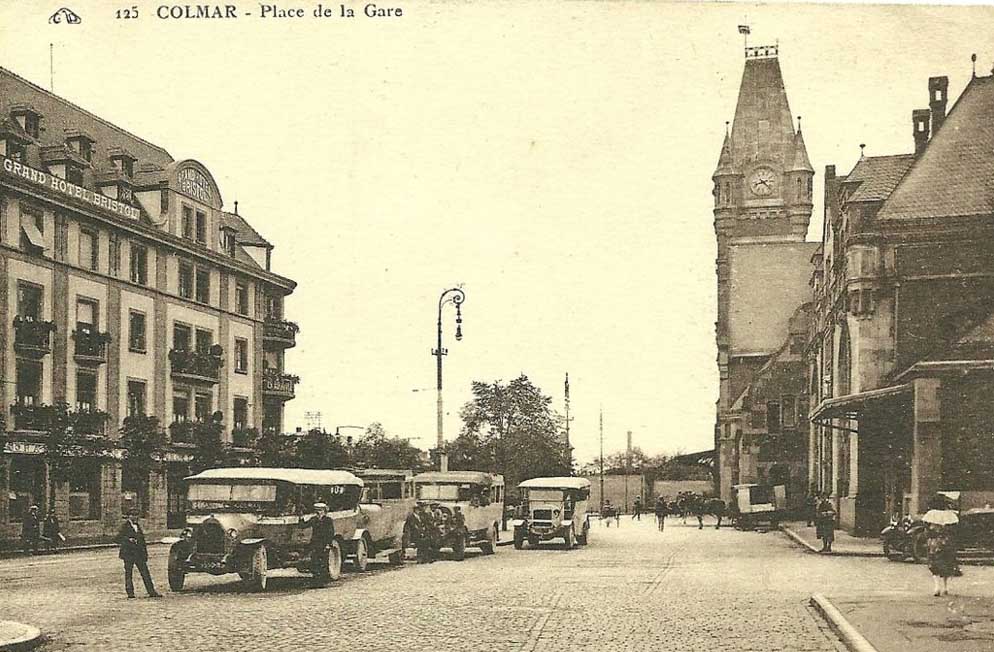From 1789 to 1918 - From the French Revolution to the Reichland
1790 :
Colmar´s population has risen to over 13,000 and it is made departmental capital of the Upper-Rhine department.
Etienne-Ignace Salomon is elected the first mayor of Colmar.
1791 :
Colmar patriots come together in the Société des Amis de la Constitution and then the Société des Amis de la Liberté et de l´Egalité, affiliated to the Jacobin club of Strasbourg, to discuss the interests of the city and those of the revolutionary movement in general.
Colmar becomes the seat of the constitutional bishopric of the Upper Rhine. St. Martin´s collegiate church is made into a cathedral and would remain so until the 1802 concordat.
Colmar would make a charming place for a philosopher to stay. The joviality of the inhabitants and the natural charms of the city and its environs are the very things a wise man seeks.
J. La Vallée, Voyage dans les départements de la France (1792)
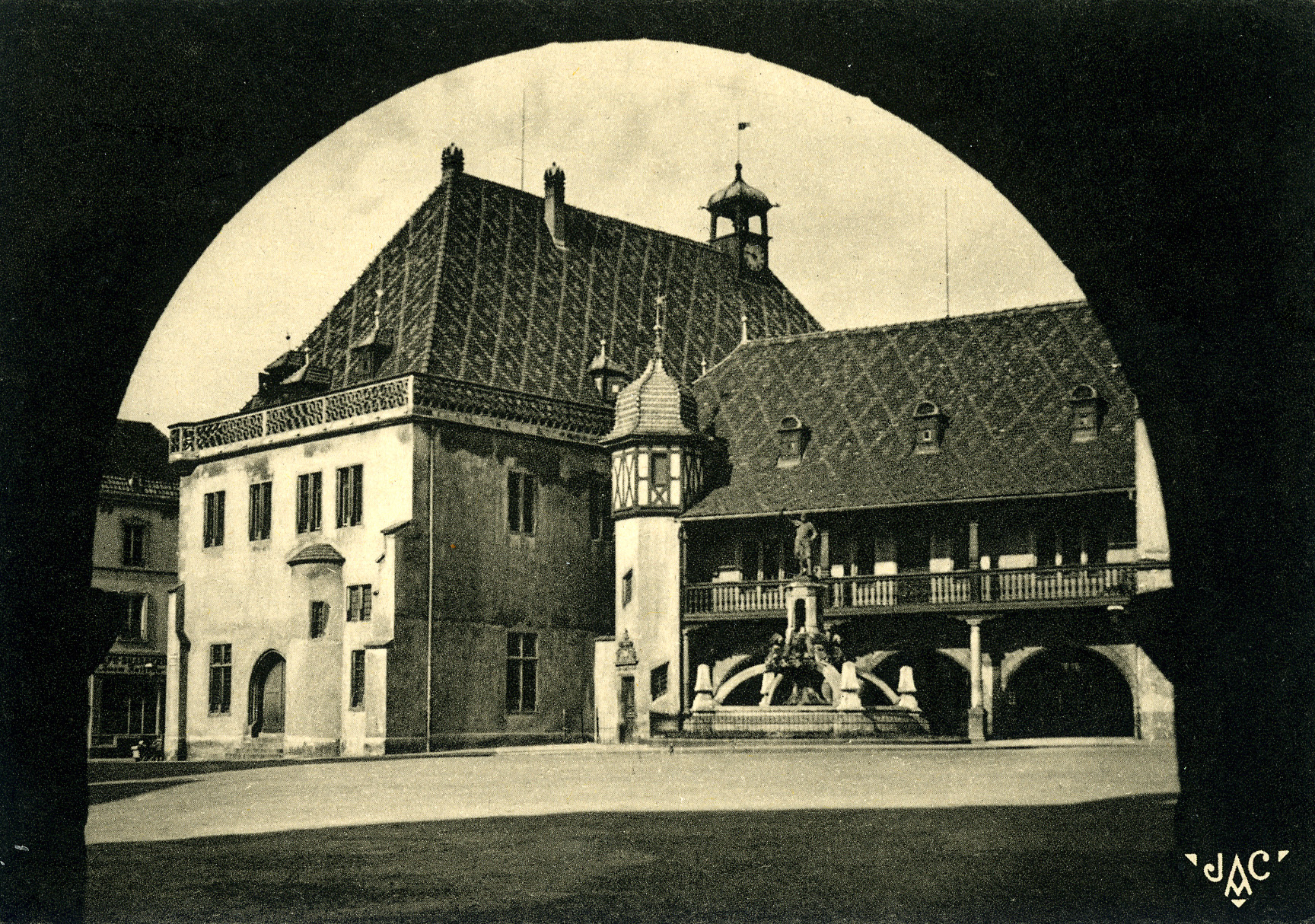
Colmar serait un séjour charmant pour un philosophe. La bonhomie de ses habitants et le site délicieux de ses environs rapprochent de la nature, et tels sont les charmes que le sage recherche.
J. La Vallée, Voyage dans les départements de la France (1792)
1792 :
Colmar´s convents and monasteries are closed down one after the other. The Unterlinden nuns leave the city, after 5 centuries.
1793 :
Hérault de Séchelles, the representative of the Revolution, turns the Upper Rhine criminal court into a revolutionary court.
13 death sentences are handed out over the next few months.
The temple de la Raison is inaugurated in St. Martin´s collegiate church.
1793-1794 :
Bad weather and a succession of poor harvests cause a food shortage, exacerbated by requisitions and the discredited assignat currency.
1796 :
Opening of the Ecole centrale du Haut-Rhin, the department´s first technical college.
1800 :
The Upper Rhine department´s first prefect arrives in Colmar and the city becomes the préfecture capital.
>> The Upper Rhine préfecture
1803 :
Opening of the Upper Rhine Midwifery school.
1804 :
The city once again becomes the regional judicial capital, with a new Appeal Court, which would become an Imperial Court in 1811.
1818 :
The Herzog textile factory, built next to the Haussmann plant, is constructed, also on the Logelbach canal, to the west of the city.
1824 :
The Israelite Consistory of Wintzenheim is transferred to Colmar.
The vine is the Queen of this region. It excludes all grass and flowers and deigns only to allow into its court such as potatoes, cabbages, lettuces and other humble vegetables that grow modestly at its feet. The presence of fruit trees is grudgingly suffered, but the vine will haughtily push its grapes up to the height of the fruit on their branches and vie with them for the air.
Colmar was once renowned for the beauty of its fair sex… The upheavals and migrations occasioned by the Revolution have caused the races to mix. Would I say that Colmar has lost nothing with this mix of peoples? Would I say that the beauty of the women has remained unchanged, like Arethusa´s spring? Would this gallantry be an avowal of the truth? What do you think, Mesdames? All in all, I prefer you to be judged by your own selves rather than by me.
Pélérinages d´un Child-harold parisien…, 1825
1828 :
Royal pomp and splendour as Charles X comes to Colmar .
Another textile factory, Kiener, starts production, in Grillenbreit in the eastern part of the city.
1831 :
Louis-Philippe, with his two sons, the Dukes of Orleans and Nemours are enthusiastically welcomed in Colmar for their two-day visit on 21 and 22 June 1831.
1833 :
The departmental Ecole Normale (teacher training college) is set up.
1841 :
Inauguration of the Basel, Colmar, Strasbourg railway. Colmar´s first station is completed the following year, in 1842.
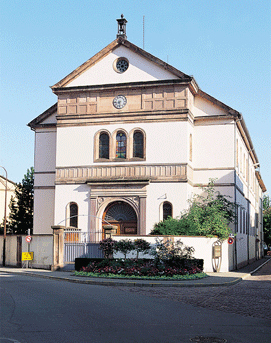 1843 :
1843 :
The Jewish community builds a synagogue, rue des Laboureurs.
1845 :
The city now numbers some 20 000 inhabitants.
1847 :
The founding of the Société Schongauer which manages the works of art kept in the former convent of Unterlinden.
1848 :
The Republican society of Colmar shows its colours in the revolution that broke out in February.
1849 :
Colmar builds an imposing Italian-style civic theatre next to the Unterlinden museum.
The city of Colmar, while neither beautiful, nor regular in appearance, is pleasant enough, with its magnificent surrounds and the resources that it offers, not unlike those of a larger city, and also its affable, urbane inhabitants. It is not Strasbourg, with its rough Germanic veneer, it is already a French city. The softening of its mores may be attributed to the Royal court, as may its fuller, wider education and the good sense of its societies. The city still boasts some of the old monuments that were its glory in times gone past.
Joseph-Sybille de Chevery, Histoire d´Alsace, 1849
1854 :
Cholera strikes Colmar, making 349 victims.
>> Cholera in Colmar

1856 :
Bartholdi carves the statue of General Rapp.
Opening of the Lycée impérial de Colmar.
1863 :
Jean Macé, a teacher in Beblenheim, a village near Colmar, founds the communal library society of the Upper Rhine (Société des bibliothèques communales du Haut-Rhin).
1869 :
The Colmar- Munster railway line is built.
It is a city of tradition, study and conscience. The Colmar bourgeoisie makes strenuous efforts to conserve the houses of their fathers, their libraries, their cellars and their faith. The men are God-fearing, enlightened and thoughtful: they are not dismissive of comfort, they are thrifty, they care not for idle luxury or for noise. Their days count at least 24 hours, each person filling them as best they think fit; nobody seems to find them overlong…
Edmond About, Alsace 1871-1872
1870 :
Colmar´s population climbs to nearly 24 000 and the city founds its first Chamber of Commerce.
In September, groups of irregulars and volunteers, including Bartholdi the sculptor, fight against the Baden troops.
1871 :
The Treaty of Frankfurt of 10 May 1871 sees Alsace come under German rule. Colmar remains the departmental capital, but is subordinate to the provincial Government in Strasbourg.
>>Colmar in the Reichsland
1877 :
Mayor Hercule Peyerimhoff is replaced by a German commissar. The move does not go down at all well in Colmar.
1882 :
The Société d´embellissement is created to "embellish the city". Among its many acts, it commissions a number of statues from Bartholdi, most of which are still to be seen today around the squares and streets of the city.
1883 :
French is banned in official documents. Alsatian civil servants are thought unreliable and are restricted to low-ranking positions.
1884-1886 :
Colmar´s water supply is completely renewed and an imposing new water tower built in the southern part of the city.

The winemaker by Bartholdi, 1869.
A fairly handsome French city, gay and with pleasant walks: such is the first impression we are given by Colmar. In the evening, families stroll along the promenades. The old part of town, with its curious houses, is lively enough. Before going home, whole families will stop by in a brasserie. And once night falls, the city streets empty, leaving only a handful of soldiers flirting with servant girls.
By ten o´clock only the sentries remain, their footsteps echoing off the doors of the military commanders or the German authorities.
Maurice Fauste, Là-bas, promenade en Alsace en 1885…
1888:
Construction of the barracks along the route de Strasbourg.
1898 :
The Colmar wine Institute is founded. One of its main aims is to prevent the spread of phylloxera and other diseases that ravage local vines.
1900:
Inauguration of St. Joseph´s church, in a new district to the west of the railway line.
Colmar´s population has now reached 36,844.
1902 :
A tram line is built between the station and the canal. In 1904, the tram carried 668 000 passengers, which led the authorities to build a second line between the route de Basel and the route de Strasbourg, inaugurated in 1914. The development of public transport went some way towards meeting the burgeoning demands of urban expansion.
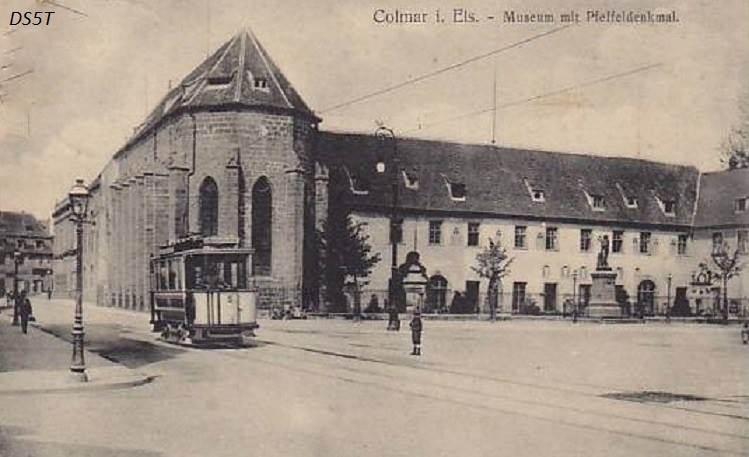
The tramway at the beginning of the rue des Clefs, early 20th c.
1906 :
Colmar builds brand new Municipal Baths, right by the Unterlinden museum.
1907 :
The new station, with a profile described by Colmar artist Hansi as "highly reminiscent of an elegant locomotive", is opened to traffic.
1908 :
Official visit of Kaiser Wilhelm II.
1910 :
Colmar now has 43,800 inhabitants including 4000 soldiers.
Narrow, fickle roads, filled at night, houses with great sloping roofs with red tiles weathered by time, houses with mansard roofs wherein the architect has managed to conjure an extra floor, houses with gabled roofs, crenelated or festooned, aligned at the builder´s whim, with the upper floor overhanging the ground floor, small windows with green shutters, some of the houses sticking out potbellied, some stooped with all askew, drawn tightly up like old women, with a truly human look; others are more delicate, the houses of civic worthies, often with white plaster and exposed beams, a sculpted gate, a turret: and in the silence of the night, the effect can be startling. The houses are of an extraordinary variety, with facades born of the imagination…
Paul Acker, Colmar, 1910
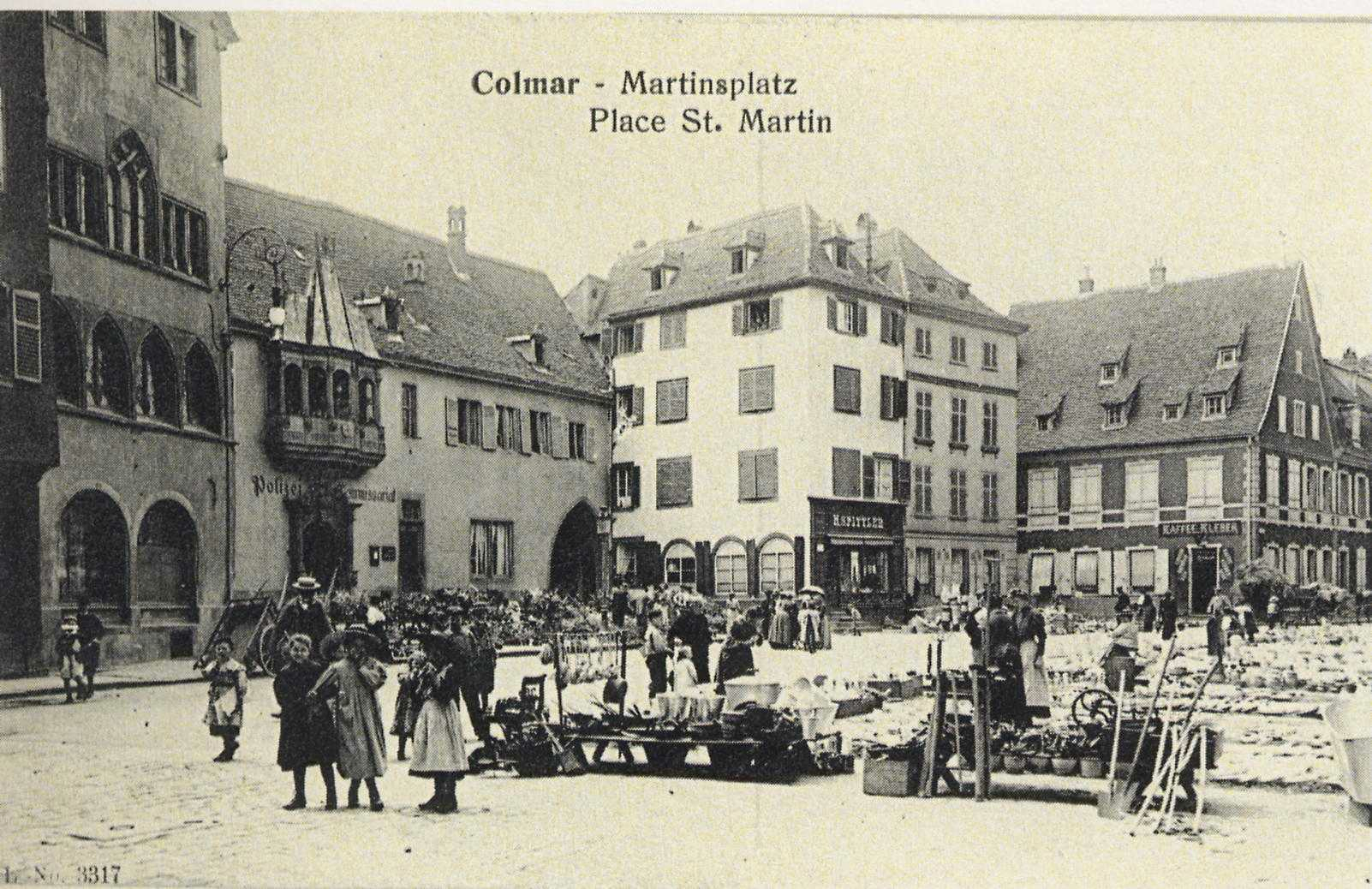
Colmar train station.
As soon as one enters within the city of Colmar, one knows one is in a city of history, that takes great care to keep intact the precious reserves left to it over the centuries: reserves of glory, reserves of art, reserves of liberty. Colmar was once a free city and has not forgotten it. Colmar was once a French city and still remembers it.
André Hallays, 1912
1914 :
On 23 August, French cavalry patrols ride into Colmar. Hopes of liberation prove short-lived as the French Army pulls back into the Vosges mountains.
1917 :
On 8 August, four people are killed by French bombardments and the municipal baths and the Unterlinden school severely damaged. The war is drawing near to the city. On 16 September there is a spectacular dogfight above the city pitting French fighters against 14 German planes from the Colmar base.
1918 :
On Armistice Day, 11 November, a "soviet" is formed, made up of a mix of soldiers´ and workmen´s committees.
French troops enter the city on 18 November.
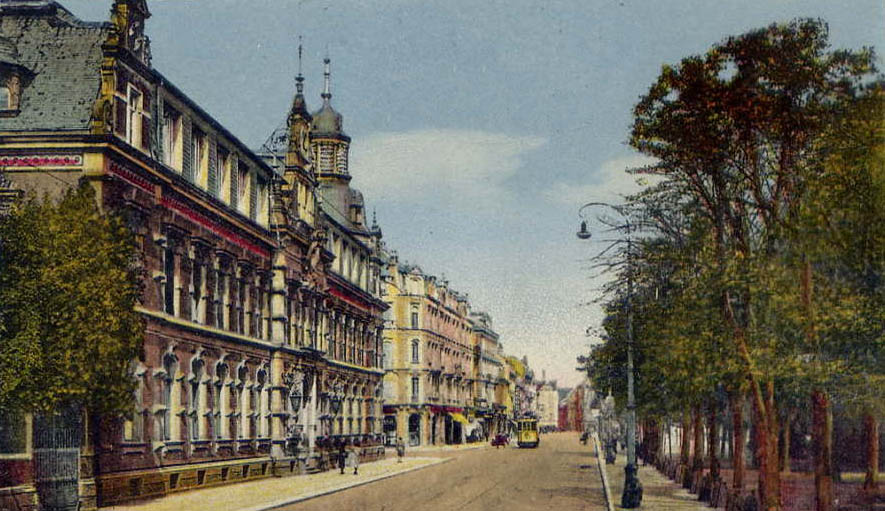
 Visit
Visit


